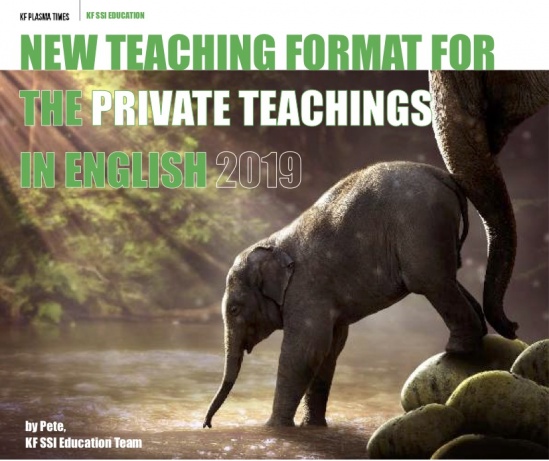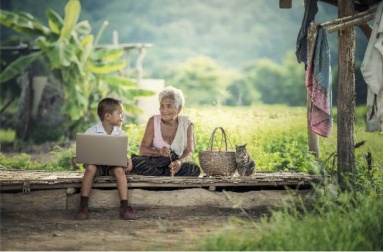New Teaching Format for the Private Teachings in English 2019
This article is part of the KF Plasma Times January 2019
How to learn effectively? How to teach effectively? These are two very common questions asked by the academia. Both, teachers and students, come to the traditional or virtual classrooms and share common interest – to teach and be taught effectively and efficiently. There is no silver bullet to this dilemma, however if one looks at the older and recent studies (https://www.linkedin.com/pulse/20140313205730-5711504-the-science-behind-ted-s-18-minute-rule/), research done in this space suggests that the shorter the better. Frequently, figures between 10-15min appear in many of such studies as the reported average attention span. Moreover, if we look at the frequently shared and viewed content on the social media and YouTube, videos that are short attract far more attention than lengthy videos.
The Keshe Foundation Spaceship Institute (KF SSI) Education team listens to the feedback from students, teachers and recent discoveries from the world of science. Short attention span, self-directed learning, lack of time, listening on-the-go are all important factors which influence the learning experience. To help student and teachers of the KF SSI, we propose a new teaching format to be followed in the first trimester of the new academic year, starting on the 14th of January 2019.
We believe that students will greatly benefit from it and at the same time it makes the life of the teacher easier.
Proposed teaching format
So, what is the new format? Before we get onto this, let’s do not forget that every teacher is different and some like to follow their own way and style of teaching. Are all the flowers the same? No! Diversity is beauty, and we always welcome those who want to teach differently from what we are recommending.
For those who do want to try something different, here is the new way explained in simple terms. Every lecture is composed of two parts: teaching and questions and answers (Q&A). Teaching is to be short and concise with a clear title of what is covered and lasts no longer than 20min. During these 20min you can either present your PowerPoint presentation (no longer than 20 slides) or play video recordings of past private or public teachings to discuss, or both. If you go for the video playback, the KF SSI Education team will do their best to help you find the content you are after.
One suggestion is to, prior to the teaching, open the selected topic of teaching in various Zoom groups such as Teachers Channel, Health/Agriculture Channel, KF Wiki Channel and student channels (also extending to Facebook groups) and ask participants of these groups to suggest private/public teachings and other materials (articles, animations, other resources) on the topic. In this way all the Knowledge Seekers can contribute with their expertise of the field. You don’t need to stick to one recording but can present a number of them, which are on the topic of interest.
You can then discuss the video(s) using the Whiteboard or the Annotate feature of the Zoom platform or follow up with a PowerPoint or any other presentation - but please keep all of it to 20min maximum. Alternatively, you can choose to present entirely by yourself without the aid of the past teachings by Mr. Keshe. If this is the case, simply put together a maximum of 20 slides. When doing so, please remember to reference any materials you used to prepare it, so that students can follow up on these if interested.
The final part of any way of teaching are the Q&A. We wish for our students to be interactive and have an opportunity to express their views, opinions and understanding. Teachers are there to answer these and if they don’t have an answer, others present may do. Q&A has no time limit, other than the two-hour mark which usually ends the class.
Other benefits
Teachers are warmly encouraged to translate and give their teachings in their language groups. Having short teaching content, makes it easier for teachers to bring the teaching into their private language groups. Even if this involves video transcription, the task is fairly short. Not all the Knowledge Seekers speak English, yet this should not prevent them from accessing the teachings.
Teachers are also encouraged to turn their presentations into the Plasma Scientific Journal or KF Plasma Times article submissions. Please consider pairing up with students (and other Knowledge Seekers) who can help you with this task, if you are planning on publishing your work.
Step by step
- A list of teaching topics is circulated amongst those expressing interest to teach. Of course, teachers can choose their own topics that they feel comfortable in teaching.
- Teachers get in touch with the KF SSI Education team with their topic(s) and availability to teach.
- Teachers are provided with a timeslot, a PowerPoint template and technical assistance to help them in the process of preparing/locating content - if necessary. Already identified educational assets, in the form of animations and past presentations or other resources to aid their teaching, will also be communicated to the teachers upon committing to teaching the topic. One can teach by summarizing the topic, extending the topic, linking different parts of (different) teachings, or by bringing a new understanding from other sciences. Teachers and the Education team can also involve other Knowledge Seekers to help them locate the desired content.
- Teaching takes place within the agreed timeslot.
- Teachers can teach the same topic in their language communities and also publish it as either a scientific paper (in the Plasma Scientific Journal - if they are adding to the existing knowledge) or as a non-scientific article (KF Plasma Times).
Open invitation
If you are a student, come along and join us in the private classes to enjoy the new learning experience. Both students and teachers are encouraged to serve by teaching others and both teaching and learning has never been easier. If you decide to teach, you are not left by yourself, as the KF SSI Education team is here to help you in respect to any aspect of the teaching – be it technical aspects, pinpointing teaching materials or original teachings, and many other aspects.
We are here to serve and to help others to serve. Interested? Perspective students can apply by visiting (http://keshefoundation.org/study-apply) and teachers can contact us via education (at) kfssi.org.
Q&A
Q1: Do I have to prepare a PowerPoint presentation if my teaching is based on a video playback?
A1: No, you can simply talk about it or use the drawing board.
Q2: What if I lack technical skills to prepare the teaching the way I want?
A2: We are here to help and if you are committed to teaching, we are committed to help you teach.
Q3: What if I am not able to share video content?
A3: The host is there to assist you. Let them know which teaching and the precise timings and they will play it for you.
Q4: How long should be the teaching?
A4: The teacher is expected to prepare 20min of content, which can be purely a video review or a PowerPoint presentation or a mixture of both.
Q5: Can I do a workshop on how to build/prepare/apply something?
A5: Sure, these types of teachings are extremely useful.
Q6: What if there are no questions after the teaching?
A6: You can either end the session, introduce some questions or other angles to the topic, or follow up with whatever students want to discuss.
Q7: What if 20min is not enough for me to teach the topic?
A7: You can do a series of teachings e.g. two, three, five. If you are over six, perhaps you want to turn it into regular teachings such as regular book studies or the soul teachings we have.
Q8: I am already teaching in private English classes; do I need to change my ways?
A8: No, unless you want to try something different.

